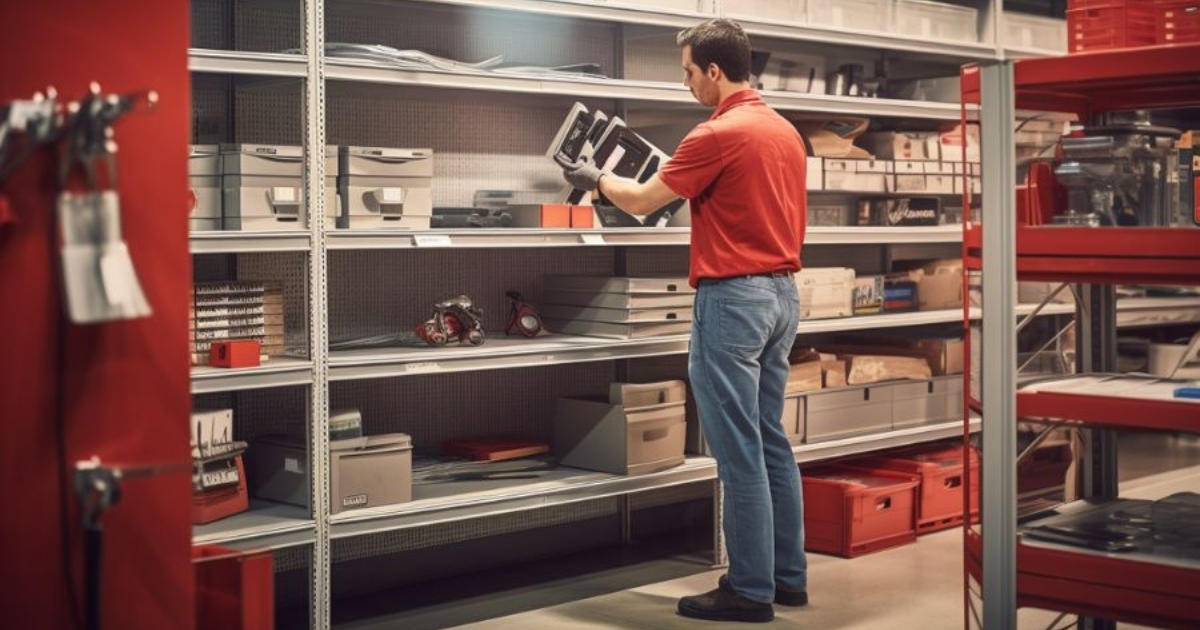
In the retail industry, one of the most important elements that tend to be overlooked is the physical well-being of the employees. Workers often have to deal with the physical demands of their jobs such as lifting heavy products, reaching for items placed on high shelves, or even bending to access items placed at lower levels. This can lead to chronic pain, fatigue, and injuries over time. This situation calls for a revolution in retail shelving design with a focus on ergonomics.
Here we’re dedicated to helping businesses optimize their retail environments for both sales performance and staff wellbeing. So let’s delve into how ergonomic retail shelving can help businesses prioritize employee safety, support a diverse workforce, and create a more inclusive work environment. We’ll provide practical advice and current trends in retail that align with this purpose.
The concept of ergonomic retail shelving
Ergonomic retail shelving focuses on designing and arranging retail shelves and products in a way that maximizes efficiency and reduces discomfort and risk of injury. Ergonomic design takes into account the physical capacities and constraints of the employee, ensuring that the work environment suits the individual’s needs.
Such designs could range from reducing the height of shelves to ensure they are reachable, to implementing lift assists for heavier items. By reducing physical strain, businesses not only protect their employees from potential injuries but also increase efficiency and productivity.
Retail shelving for an age-diverse workforce
As businesses embrace diversity and inclusivity, more older individuals and people with mild physical disabilities or mental retardation are being welcomed into the workforce. This diversity brings a range of benefits such as increased creativity and broader perspectives. However, it also necessitates the need for workplaces to adapt their environment to support these individuals.
Ergonomic retail shelving can be a game-changer in this regard. For instance, adjustable shelving units can be tailored to the physical capabilities of individual employees. This allows for increased independence, reducing the need for assistance when retrieving or storing items. Additionally, clear signage and easy-to-read labels can assist those with cognitive impairments.

Implementing ergonomic solutions
Adapting a retail environment to be more ergonomic requires careful planning and design. The first step is to carry out an ergonomic assessment to identify the potential risks and areas for improvement. This involves reviewing the tasks carried out by employees, their frequency, and the physical demands of these tasks.
Once the needs have been identified, retailers can then implement solutions. For instance, items that are frequently sold could be placed at waist height to reduce the need for employees to bend or reach. Trolleys and step stools can also be provided to help employees safely reach higher shelves.
For heavier items, consider using mechanical aids such as lifting equipment or designing shelves in such a way that heavy items can be slid rather than lifted. Incorporating rotating or sliding shelves can also help minimize twisting and turning actions that could potentially lead to back strain.
Ergonomics and technology – a dynamic duo
In keeping with current trends, technology plays a crucial role in making retail environments more ergonomic. Automation and robotics are leading the way, with machines assisting in tasks that are repetitive or physically demanding.
For example, robotic shelf scanners can help reduce the need for employees to repeatedly scan shelves for inventory, freeing up staff time and reducing physical strain. Self-service kiosks and automatic checkout machines also reduce the workload on cashiers.
Do not forget about sustainability in the process since that is a goal every modern company aims to achieve. Therefore retail product display stands made from wood or other sustainable materials is a way to go.
In conclusion
By prioritizing the safety and wellbeing of employees through ergonomic retail shelving, businesses can foster a more inclusive work environment that caters to a diverse range of physical abilities. As a bonus, ergonomic solutions can also lead to increased efficiency and productivity.
Check out our other articles about retail shelving and more here:
- Incorporating the Circular Economy in Product Shelving
- Sustainability with Eco-Friendly Beverage Fixtures
Remember, at RetailMaster.eu, we’re here to guide and provide you with the best solutions to fit your unique retail needs.


